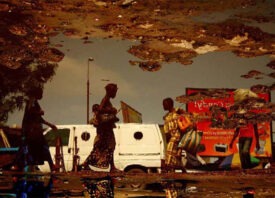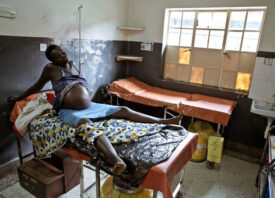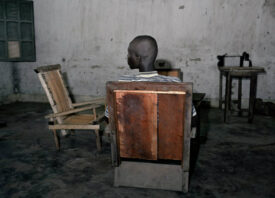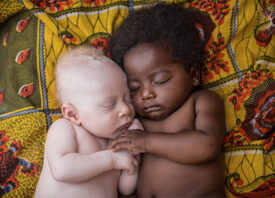Search this site
A Look Inside the Illegal Mining Industry in the Democratic Republic of Congo
War for Minerals is photographer Erberto Zani‘s visual investigation of the men who mine for coltan, manganese, and other rare metals in the Democratic Republic of Congo, often under unclear, dangerous, and complicated political conditions.
Coltan and Manganese, for example, are rare metals used to make mobile phones and computers whose market value has skyrocketed, thus attracting both the interest of multinational corporations and criminal organizations. While these men mine for said minerals, often barefoot and without unionized support of any kind, these corporations have concurrently engaged in buying off local armed rebel groups to fight off the interest of other armed rebel factions in an effort to take control of the mining industry. Legal? No. Complicated? Yes. Especially when, according to Zani, we learn that Rwandan buyers, soldiers, and police are also involved.
The mining occurs in front of a backdrop of an ongoing rebel movement, formed mostly by “Congolese Hutu” some of whom have been “reintegrated into the Congolese army.” Zani, who has worked on similar mining issues in Colombia and India, is currently looking to publish this work under the title “Black World,” along with this collection of images taken in the DR of Congo during the conflict between the national army (FARDC) and the M23, a rebel group in the eastern part of the country, that has resulted in a high number of civilian casualties.
We spoke with Zani further about his experience with illegal mining on a global scale and how this work came to be.





What made you want to investigate this issue further?
“All my work as a photographer is focused basically on social documentary topics, including this body of work. My goal is to investigate, via photo and interviews, what happens inside the mines (to expose the inhumane conditions), to find out who’s controlling the labor, and the reasons behind the demands of these minerals, etc. Usually I work, as much as possible, “inside” the story: near the protagonist/the miners. In this way, I try to feel their physical and mental suffering.”

Where are most of these miners from and what does the daily life look like? What role do children have in this work, if at all?
“The men are from the North Kivu region, especially near the town of Rubaya, where they find “jobs” in Mudere’s mine. Here, they are under the control of the Nyatura militia, an ally of the FARDC.
“There is no such thing as “training” for this “job” — people start digging and carry out what they are told to: looking for minerals. Via interviews with different people (military, miners, civil people in Rubaya and Goma) I learned the route of these minerals of war (coltan, manganite, gold, diamonds…) are from the D.R.Congo to Rwanda, where they receive a certificate as “Rwandan” and become free to sell all over the world.
“When I went inside the mine, there weren’t any children at work; the soldiers probably hid them beforehand. I asked people in the village of Rubaya and they told me that there are a lot of children who stay in the mine, especially during the rainy season. Tunnel digging is incredibly dangerous and, in general, most soldiers prefer prefer to use small children because they can make and fit into smaller holes.”


Are there any local NGO’s on the ground there? Is there anybody advocating for these men often put in dangerous work environments?
“There are no NGO’s in the area. Usually no foreigners are allowed to travel near the mines. With the war going on, the numerous armed gangs are a nightmare for anyone. Here the price for a life is very low, corruption is as endemic as the malaria, and the people live day by day in terror.”







